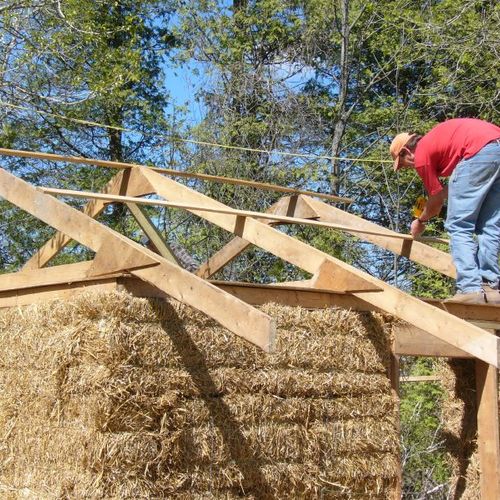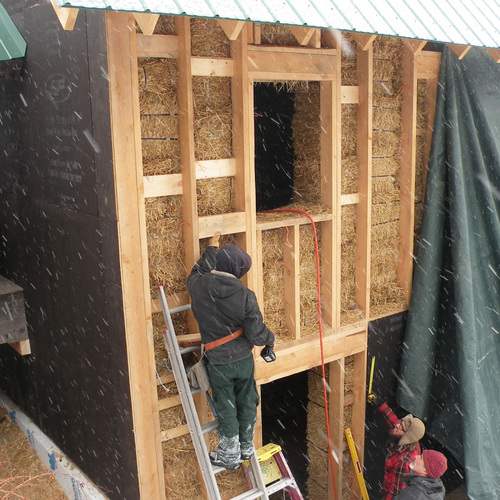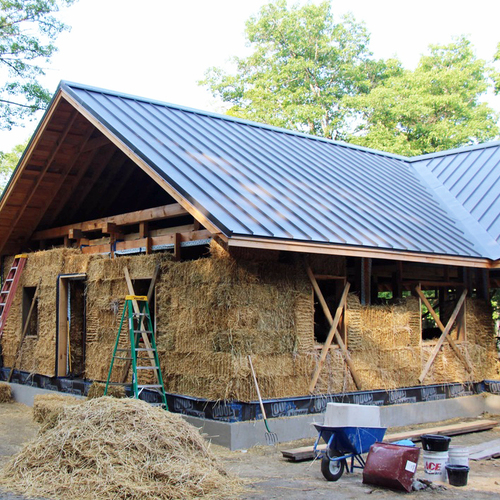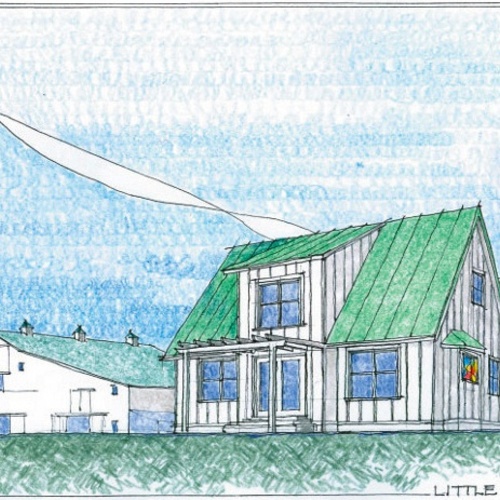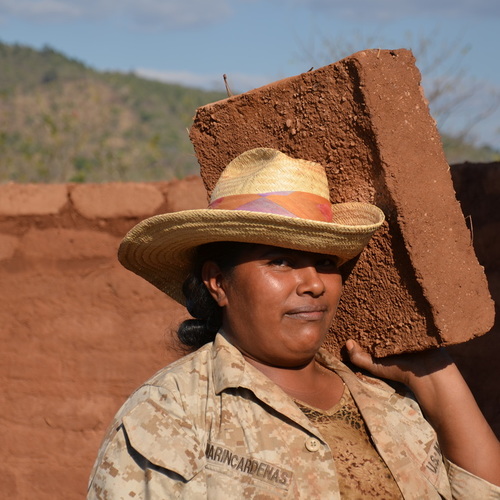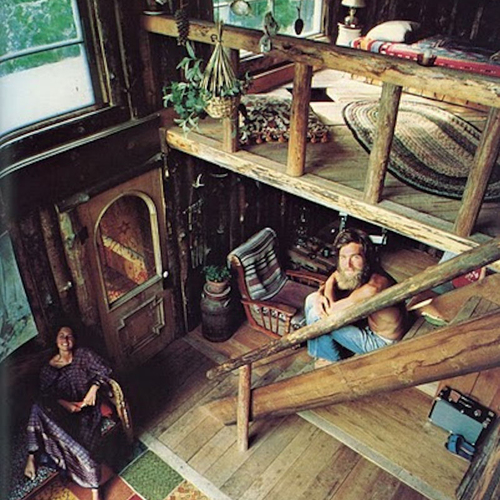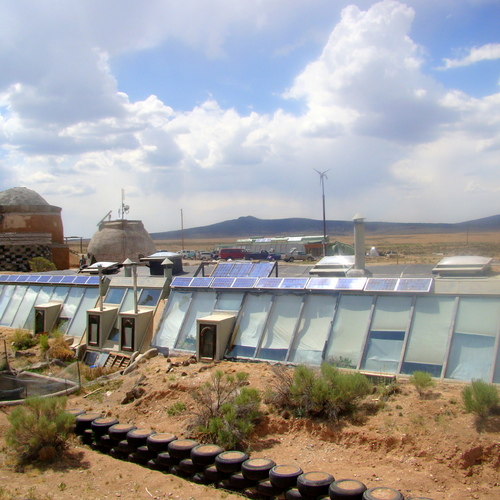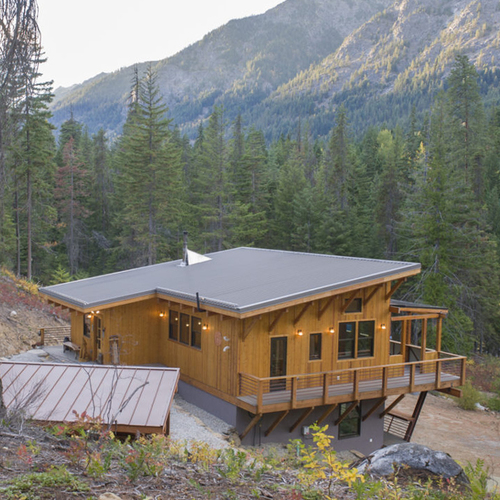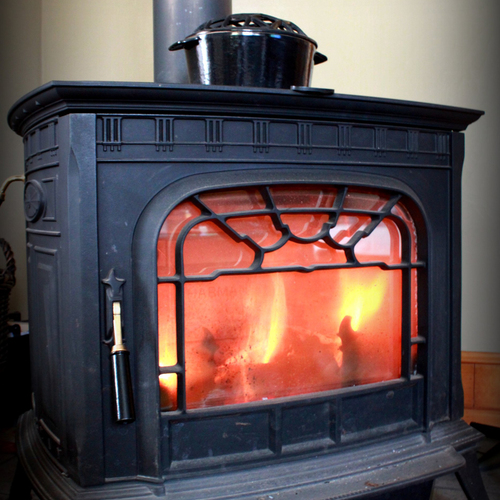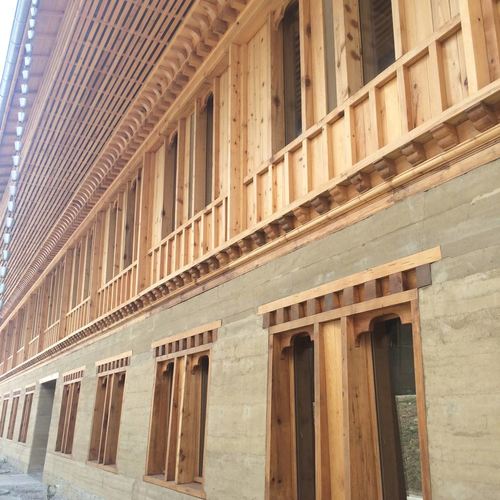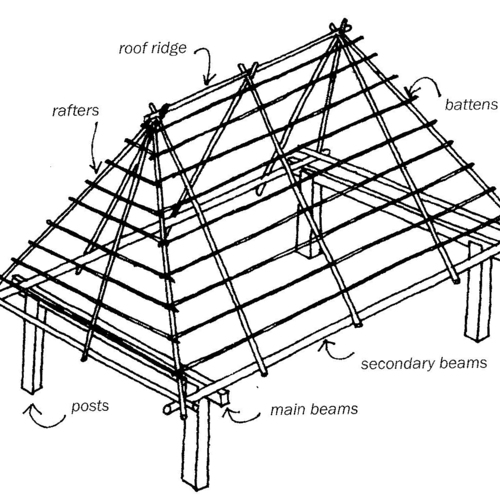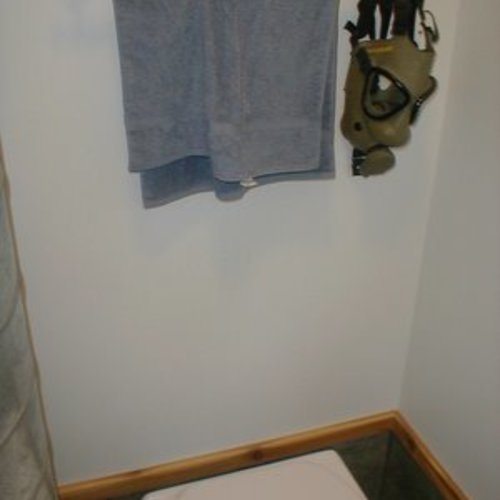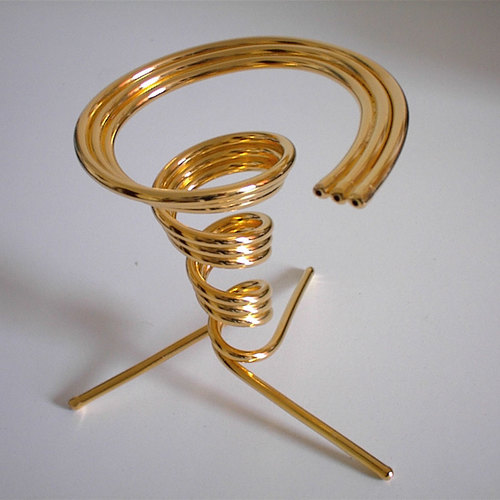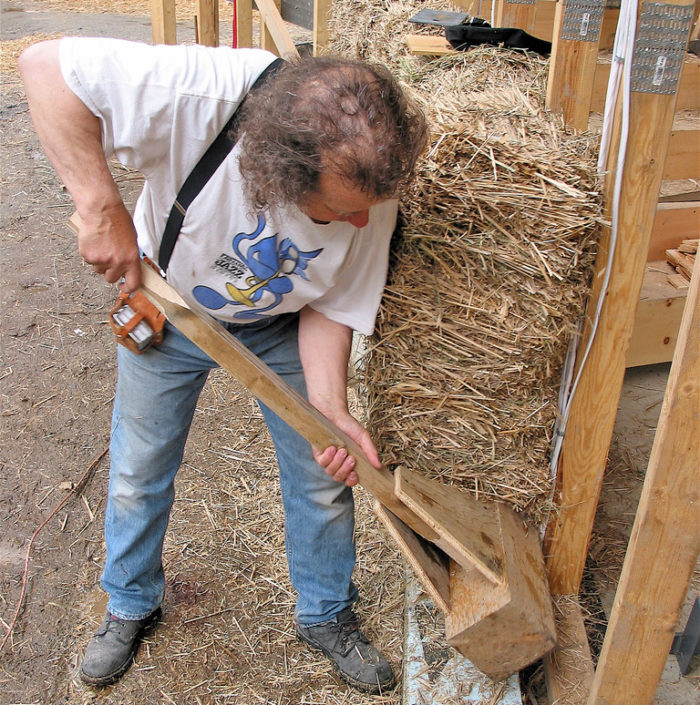
This is a list of the most important GBA articles on natural building.
The natural building movement represents the original branch of the green building movement — one that emphasizes the use of natural building materials like mud, straw, and sticks. Natural builders usually limit purchases of manufactured building components, and look to indigenous communities for inspiration.
If you are looking for an index that spans all categories, with a special focus on “how to” articles, check out this resource page: “How to do Everything.”
-
Straw-Bale Walls
Do you want to build your home out of natural materials? If so, you can build your walls with adobe, cob, cordwood, rammed earth, or wattle-and-daub. Although all of these walls have a long history, their thermal performance is poor. If you want a well-insulated wall, one natural material is the clear winner: straw bales. A 23-inch-thick straw-bale wall has an R-value of about R-33. Moreover, since virtually all straw-bale walls are plastered on both sides, these walls are relatively airtight.
-
Straw-Bale Walls for Northern Climates
The mechanical baler was invented in the 1850s (Reynolds, History of Hay Balers), and it's been a while now since those folks in the Midwest put up a couple of bale houses. You would think that by now we would have very refined construction techniques for straw-bale construction, given that some of those original buildings are still standing. Well, we are getting there.
-
A Straw-Bale Home in Vermont
The owner of Vermont Natural Homes, Chad Mathrani, is building his own home near Brattleboro, Vermont. The walls of the house are built using several different construction methods, including timber frame, straw-bale, and double-stud framing insulated with cellulose. This video of Mathrani's project was produced by a distributor of building products, 475 High Performance Building Products in Brooklyn, New York.
-
A Straw-Bale Project Aims for High Performance
Ohio has turned out to be a busy place for projects aspiring to exemplary energy efficiency, including Passivhaus performance. A three-bedroom, 1,800-sq.-ft. home near Dayton was completed in 2010 and since has been Passivhaus-certified. And a 2,500-sq.-ft.
-
Nostalgia for the Hippie Building Heyday
A discredited theory of embryonic development held that “ontogeny recapitulates phylogeny” — in other words, that the the developmental stages of an embryo (its ontogeny) mimic the stages of evolutionary development experienced by the species (its phylogeny). One piece of evidence supporting the theory: in early stages of development, a human embryo has a tail.
-
Natural Building in Nicaragua
[Editor’s note: Liz Johndrow is a natural builder who specializes in the use of cob, strawbale, adobe, earthbag, and earthen plasters. During the winter months, she volunteers in Nicaragua, where she works with villagers, especially women, on construction projects in Sabana Grande, Totgalpa. What follows is a sample of Johndrow’s blog entries written from Nicaragua. You can learn more about her work at her website, Earthen Endeavors.]
-
Low-Road Buildings Are Homeowner-Friendly
There are at least two recognizable camps in the green building community. The older camp includes hippies, owner/builders, and those in the natural building movement. These builders prefer to scrounge materials from the woods or demolition sites rather than purchase new materials from a lumberyard. Their homes might be made of adobe, logs, or straw bales.
-
Earthship Hype and Earthship Reality
If you are a hippie from Taos, New Mexico, you know what an earthship is. It’s an off-grid earth-bermed passive solar home with exterior walls made of old tires packed with dirt.
-
Twenty Below and Off the Grid
In a recent blog, Allison Bailes did a great job defining heat and explaining heat flow. It’s important to remember, though, that Allison Bailes lives in Atlanta. When the temperature drops to 6°F in Atlanta, the story makes national news. But when the temperature hits -20°F in Vermont, we just tell our kids to remember to wear a hat when they walk to school.
-
How to Design an Off-Grid House
A very small percentage of U.S. homes are off the electricity grid — far fewer, for example, than in Africa. That said, North American designers of off-grid homes often end up posting questions on GBA. To help this subset of builders avoid common design errors, I’ll share what I’ve learned from living in an off-grid house for 42 years.
-
All About Wood Stoves
If you’ve been heating your house with wood for years, you probably don’t need to read this article. By now, you know all about the disadvantages and inconveniences that accompany wood heat, and yet you still heat with wood — either because you genuinely love wood heat, or because you love the low cost of the fuel. If you haven’t burned down your house by now, you may even have figured out how to install and operate your stove safely. This article is addressed to a different audience: those who are thinking about buying their first wood stove.
-
Building a Foam-Free House
UPDATED on May 22, 2015
-
Shades of Green
Recently a friend asked for help in designing an off-grid house. Interestingly, I pulled out the old books from the '70s to show as examples and inspiration. We tagged a combination of ideas: an earth berm house, a passive solar house, an attached greenhouse buffer space, a solar thermal system, and a stack effect heating/cooling system incorporating a heat sink (southern rock exposure) and a cool northern forest glen. It all seemed so — natural …
-
Green Homes Don't Have To Be Durable
According to most green advocates, green buildings must be durable. Alex Wilson memorably summed up the case for durability in an Environmental Building News article titled “Durability: A Key Component of Green Building.”
-
Drawing Lessons from Ancient Roots
From the beginning of time, the most common building materials have been the most common materials in the immediate environment. This of course means that early buildings were built of dirt, a material that is plentiful, cheap, and malleable. Many of the oldest buildings in the world are made of rammed earth (compacted dirt). And this type of building continues to be a common and viable construction methodology in many places of the world.
-
Rural Construction Methods in Tropical Countries
Green building enthusiasts come in two camps. Builders in the first camp follow programs that emphasize energy efficiency; those in the other camp are so-called “natural builders” who emphasize the use of materials like straw, mud, and sticks. (For an analysis of this split, see Low-Road Buildings Are Homeowner-Friendly.)
-
Does a Composting Toilet Stink Up Your House?
Ten years ago I was building a green home. It had passive solar features, was built out of structural insulated panels, sent all the greywater out to the back yard to water fruit trees, and was going to be super energy efficient. One feature above all others, though, captured people’s attention when I described the house to them — the composting toilet.
-
Toxic and Non-Toxic Houses
Are green builders more fearful than most Americans? It would certainly appear so, since so many of them show signs of an almost paranoid obsession with toxins.
-
Helping People With Multiple Chemical Sensitivity
If you are a designer or builder specializing in green building, it’s only a matter of time before you are approached by a client who suffers from multiple chemical sensitivity. A typical request might go like this: “Many ordinary building materials can make me sick. I’m looking for someone to design (or build) me a house without any toxic chemicals.” What’s the best way to respond to such a potential customer? To answer this question, let’s turn first to the medical experts.
-
EMFs and Human Health
Every now and then, green builders are approached by clients who are worried about exposure to electromagnetic fields (EMFs). Such clients have read that EMF exposure can make them sick, and they’re interested in building a house that minimizes EMF exposure. In the modern world, EMFs are ubiquitous. Most of us are surrounded every day by weak electric and magnetic fields that are generated by electrical wires, home appliances, cell phones, and broadcasting equipment.
